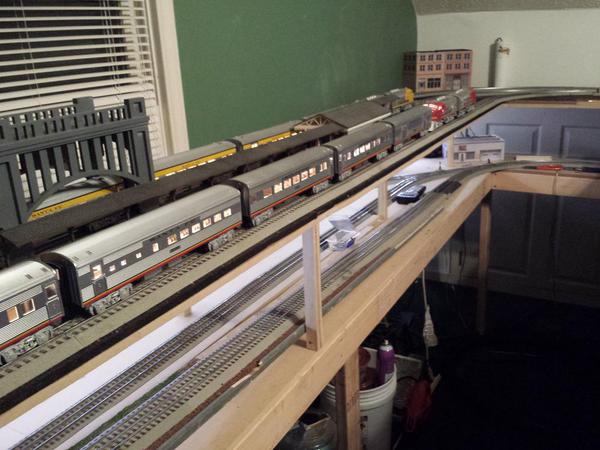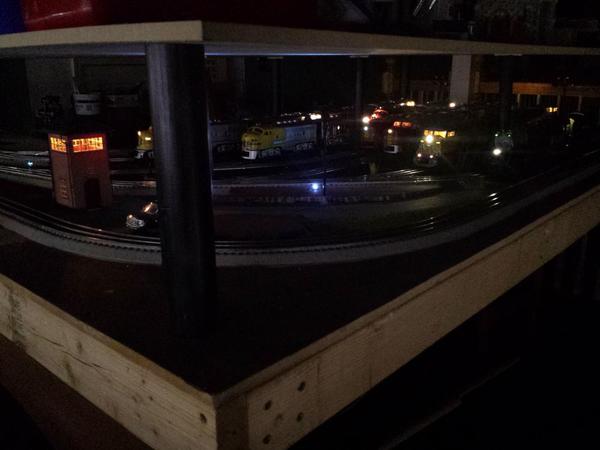Hi,
I am relatively new here, and have posted some electrical and controle system questions, but now I am looking into noise reduction.
I have completed the 2ft extension to my 2.5ft x 8ft basement workbench, and now have my 4.5ft X 8ft temporary/beginner layout table complete. I have a full loop around with a siding on one side, that has another siding inside it, and plan some spurs on the far side very soon.
I have been running my trains for a bit, and now am ready to put down the grass like covering that I purchased at my local dealer, and since I need to move the track to do it, it seems that it would be a good time to put down some noise reduction insulation, if indeed it really reduces noise.
The bench top is 1/2" plywood, because that was what my workbench was made of in the first place, and I am using Lionel FasTrack.
I have read the 1" thick insulation foam works well, but would like any and all suggestions that you guys might have regarding benchwork sound reduction.
Thanks,
Roger









